Community
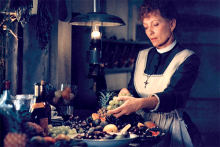
EARLY JANUARY MARKS the start of the season of Epiphany, during which Christians recognize the beginning of Jesus’ ministry. Scriptures point to the disruptive nature of Christ’s messiahship: Jesus asks John to baptize him (Matthew 3:13-17), an act that surprises John, who believes he’s unfit to baptize the son of God. Then Jesus delivers his first miracle when he turns water not just into wine, but the best wine, upsetting the tradition of serving good wine first, and cheap wine later (John 2:1-12).
Both acts signal that Jesus’ ministry won’t be what people expect. Rules will be challenged. Abundance, not scarcity, will reign. These stories remind us to seek the living God in unexpected forms.
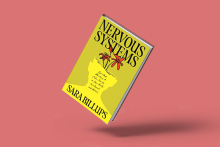
IF YOU'VE SPENT some time in church, you’ve likely heard a sermon on Jesus’ instruction, “Do not worry.” But how do we actually do that? Can we actually do that? In Nervous Systems, author Sara Billups grapples with “the dissonance between the head reading ‘do not worry’ and the heart worrying.” And while Billups seeks to align her head and heart, she does not claim to have found a spirituality that magically dispels anxiety. “My anxiety did not dissipate,” she writes. “Instead, God met me repeatedly in its very presence.”
With a mix of memoir and critical reflection, Billups explores how God meets us wherever anxiety dwells—in the human body, the church body, and the body politic. Billups, who has a doctor of ministry in the “sacred art of writing,” relies on both research and personal experience to guide her. She weaves in her exploration of Ignatian spiritual practices as a tangible way to seek God’s steadfast presence in anxious times. Reflecting with candor on her anxieties around health, aging parents, motherhood, church, and politics, she captures the nuance that Christian discussions of anxiety—the ones that might boil down to “just pray more” or “trust God more”—often miss.
I appreciate Billups’ emphasis on being “faithful and present” in our lives, relationships, faith communities, and world. For her, fidelity and stability are spiritual practices. In a time when “our anxiety manifests acutely in political polarization,” as Billups writes, we need a spirituality that grounds us. We need a faith that reduces our defensiveness and pushes us to engage with diverse communities out of a desire to love, rather than a need to control. “Political anxiety is stoked,” Billups writes, “when we are not well-formed and spiritually mature.”
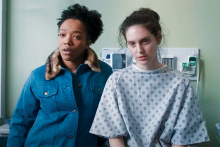
IN A PERENNIALLY timely 2014 article about the lessons she learned from her experience with trauma, Catherine Woodiwiss wrote, “Trauma is a disfiguring, lonely time even when surrounded in love; to suffer through trauma alone is unbearable.” We need people around us when we’re suffering, if only to know that they’re there to call on when we need something.
When my trauma and anxiety journey started in 2016, I quickly learned that putting up a front of “Everything’s fine!” only made things worse. It was humbling to admit I needed support. It was empowering to realize people wanted to help. I knew that someday, when I felt better (and I would feel better), I would return the favor.
The film Sorry, Baby, from writer-director Eva Victor, is the most accurate depiction I’ve seen of how trauma stays in your mind and body and what it takes to reach a place of stability. After Victor’s character, Agnes, experiences sexual assault, she relies on the help of close friends and a neighbor, and a stranger’s kindness, to help her through the three-year period that follows.
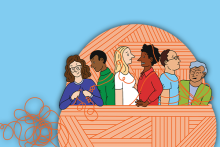
STUDY AFTER STUDY and book after book tells you that modern society has a community-support problem. People are lonelier and more isolated than ever and are expected to solve these collective and societal problems by themselves. But you don’t have to do this alone. You can do this with the support of my handy guide to community building!
Allow me to propose some ideas for how to create your own community-support network when every thread in the fabric of American society seems designed to keep you from it.
□ Search relevant terms on Google such as: “What is community?” and “What is community support?” Start a discussion group to answer these questions. Congratulations! You now have a community of people who love to argue in circles. Consider turning this into a Bible study.
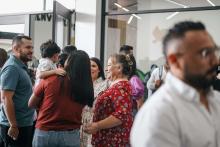
Even in the depths of high-control religion, there were moments of being fed and cared for that I did not know I missed until I did.
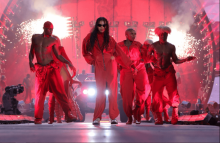
My “For You” page is dancing again. Coming off the release of Beyoncé’s country album, Cowboy Carter, the TikTokers have taken center screen and are imitating line dances in celebration of her new sound. Sheepishly, I have been attempting to join in. I don’t dance. Or I should say I do not dance well. I’ve never been classically trained, I’ve got two left feet, and I still have to silently mutter the steps to the electric slide to stay on beat. I’ve consistently struggled to find my rhythm, but I dance anyway.
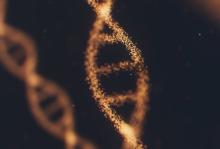
IN 2012, a group of scientists from the University of Washington discovered Y chromosomes in the autopsied brains of female cadavers. Finding so-called male DNA in cis women’s bodies certainly complicates our notions of gender! But the focus then was on introducing the sci-fi-sounding concept of fetal microchimerism. Fetal cells, we learned, can remain integrated at the genetic level in someone’s body long after the fetus or baby is not. These cells can be passed on to future siblings, thus embedding visceral relations within our bodies that even the most adept family-systems theorist would struggle to disentangle.
The scientific community labeled this a discovery. But for anyone already skeptical of the mind-body dualisms in Western culture, this was simply science catching up with how we already experience our ancestral relations. Intergenerational wisdom and trauma aren’t simply intellectual concepts. Rather, our ancestors’ presence in our lives connects at sites where body, spirit, mind, and soul inextricably intertwine. And these sites are in desperate need of some decolonizing attention if we’re to reclaim our ancestral relations in our practices of Christian faith. Of course, that might not be something we all want to do. But this month, I’ll engage the lectionary readings through this lens to see what questions and insights might arise. And I’ll do so with the hope that our wide, wondrous communion of saints will read along with us.
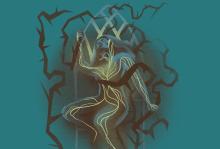
THE FIRST TIME I became conscious that I was carrying the effects of religious trauma, I had just moved to Seattle and was sitting in a church, sweating.
My heart was beating fast; I couldn’t understand what was happening. This church, one I had chosen expressly because of its progressive, LGBTQ+ affirming stance, was supposed to be safe for someone like me, a queer person who deeply valued my faith. But I didn’t feel safe. I looked at the faces in the room with suspicion, searching for any indication of a bait-and-switch, and left the building quickly once the service was over.
Despite what I knew about the church — they welcomed LGBTQ+ people at any level of leadership, were committed to anti-racism work, and weren’t afraid of doubt or theological exploration — my body told me another story. As I sat in the cold folding chair, I tried to reason with myself, repeating these facts to calm down. But I didn’t feel calmer; I felt worse. I sat on my hands, legs shaking, as I waited for the service to end.
Because I had moved to Seattle to work on a master’s degree in counseling psychology from an institution that specialized in trauma, I soon learned what had happened: In that moment, my body had experienced the effects of trauma. Even though I cognitively knew the church was supposed to be safe, my body couldn’t discern this church from all the churches I had been in before — churches filled with people who weren’t afraid to tell me I needed to become straight for God to save me from hell. My body was sending warning signs: Be careful, environments like this aren’t safe. Despite the years of work I had done to detach myself from the rigid belief system of my youth, despite the ways I had fought to find a more life-giving approach to theology, I was beginning to reckon with the reality that changing my beliefs didn’t mean I had healed from the environments in which I was raised.
Now, years later, I see more people waking up to the realities of lingering religious trauma. When I scroll through my streaming apps, I see documentaries such as Shiny Happy People, Pray Away, and Hillsong: A Megachurch Exposed that detail different forms of religious harm. I think this growing awareness of religious trauma is part of the driving force behind “deconstruction,” a buzzword that describes the process of reevaluating, changing, and sometimes abandoning one’s beliefs. But what I don’t see as often on Netflix — or on podcasts or on social media or at church — is honest talk about the process of healing. And as someone who now works as a therapist helping survivors of religious harm find healing, I know there is a lot more to say.

IN 2011, I took a course at my Christian college about the personality type system known as the Enneagram.
The Enneagram is a system built around nine personality types, with each type providing a unique perspective on how we navigate our relationships, emotions, and the world around us. The Enneagram draws on both spirituality and psychology, which distinguishes it from many other personality indicators.
A primary question that emerged for me from that college class: Does the inner work that the Enneagram encourages manifest itself in the outer world through justice work, or is the Enneagram primarily a tool meant to encourage people to focus on individual healing, career, and spirituality?
Throughout history, questions about how and why each human has a unique set of behaviors, motivations, emotions, and cognitions have preoccupied philosophers, psychologists, sociologists, religious thinkers, and Buzzfeed quiz creators alike. Indeed, in the 21st century, “know thyself” is less of a thought-provoking ancient Greek aphorism and more of a cultural imperative lauded by the self-help industrial complex and career coaches. We are assured that by unlocking our “true selves,” we will ultimately be unlocking our true potential, which will drastically improve our fortunes.
But the Enneagram was never meant to simply measure our potential or provide a definitive answer to the question of human personality. This is contrary to some of the most popular personality indicators such as Myers-Briggs or CliftonStrengths (formerly StrengthsFinder), which became popular because they promised to help employers tap into human potential and productivity. The Enneagram originated as a tool for contemplation but has come to emphasize how self-growth and inner work prepare us for the outer work of building community.
daniels.enneagram.inline1.jpg
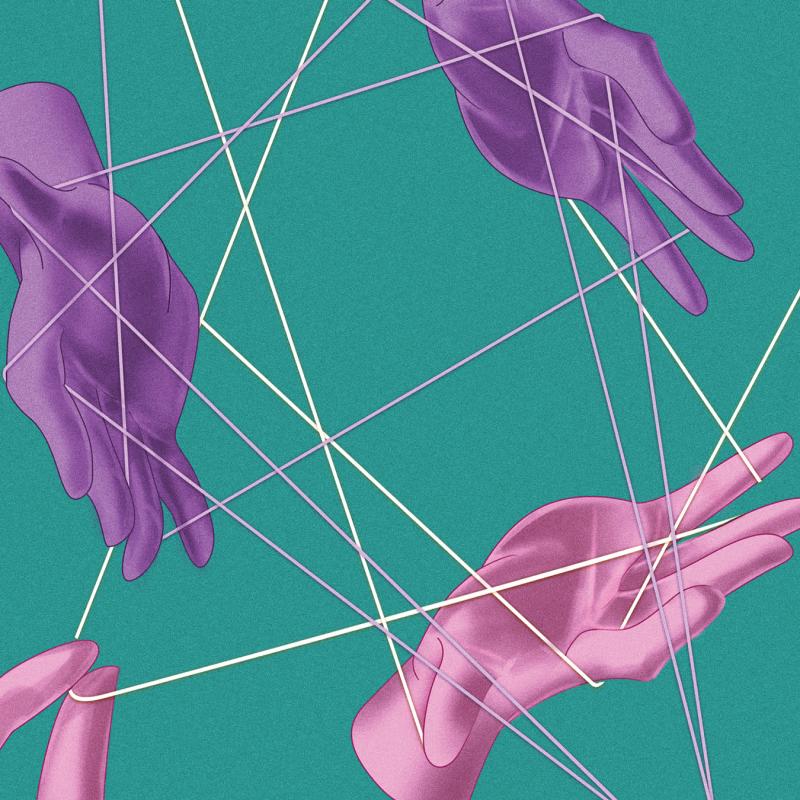
In their book The Enneagram: A Christian Perspective, Catholic priest Richard Rohr and Lutheran minister Andreas Ebert point to a 4th-century Christian Desert Father, Evagrius Ponticus, as the first to use, loosely, the nine-pointed symbol to highlight vices that he believed interrupted one’s inner peace and relationship with God. But it wasn’t until the 1970s that Chilean psychiatrist Claudio Naranjo, inspired by a theory originated by Bolivian philosopher Oscar Ichazo, used modern psychology to develop a theory of nine distinct personalities — or “enneatypes” — that highlighted the vices, virtues, and core motivations of each type.
The Enneagram is sometimes treated as just another personality test that can help us purchase the things that “match” our personalities, find romance, or unlock our “true potential” so we can make more money — part of our culture’s obsessive focus on self-improvement. But at its best, the Enneagram not only emphasizes making peace with yourself and a higher power, it also offers tools for learning how to be in community and build a more just society.
To help me sort through my questions, I interviewed three Enneagram experts: Chichi Agorom, an associate faculty member with The Narrative Enneagram and author of The Enneagram for Black Liberation; Jessica Denise Dickson, a life empowerment coach and Enneagram guide who uses the Enneagram in anti-racist workshops; and Abi Robins, a queer, trans Enneagram teacher, coach, and author of The Conscious Enneagram. Their responses have been edited for length and clarity. — Josiah R. Daniels
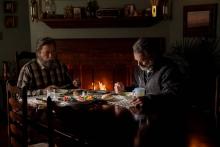
The Last of Us has some of the characters you’d expect in an end-of-the-world series, including Bill, a survivalist portrayed with comical stoicism by Nick Offerman. Only one word can describe the look on Bill’s face when he emerges from his stately New England home, lowers his pistol, and pulls off his gas mask: relief. Not relief that his neighbors were still there, saved from the disaster that government officials had been warning them about, but quite the opposite: Bill’s relief comes from the fact that his neighbors have gone, evacuated to a quarantine zone while he hid in his heavily fortified safe room. With the entire town to himself, Bill indulges in his new life and gets what most doomsday preppers only dream of: an actual doomsday.
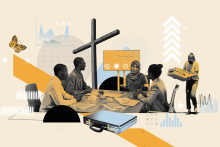
Three ways churches can decenter themselves and economically empower their communities.
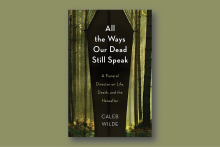
CALEB WILDE is familiar with death. He is the descendant of two long-term generational funeral home families and went into the funeral industry himself. His first book, Confessions of a Funeral Director, delved into some of the more uplifting stories he’s had in death care. His latest book, All the Ways Our Dead Still Speak, is more introspective.
The early chapters detail a few death experiences — an atheist seeing the dead parents of her husband as he dies, for instance — and at first, that’s what I thought the book would be about: exploring what people’s deathbed visions meant to them, regardless of whether those visions were real. But for Wilde, that’s missing the point. What matters is that the dead are still speaking to us. Death isn’t necessarily an end, Wilde argues — it’s a transformative experience; the living carry inside us the essence and dreams of the dead. Open conversations about death and dying can lead to a healthier society.
Wilde specifically calls out white people, his ancestry and mine, for being disconnected from their ancestors. He cites the difference between the polite, private, quiet funerals of white people versus the communal, intensive, emotional funerals of Black people. Many white people believe that grief is a personal, private journey. However, in many Black families and cultures all over the world, grief is a communal process. People come together to remember, love, and support each other. In these times, they cease to become individual selves and instead focus on the plural self — on community: A community of people both dead and alive.

I wish I could say that my journey into beekeeping began in some profound manner, especially as a person who has spent years working on policies that impact the environment and food security. But the truth is that I started playing The Sims 4 to keep myself entertained during the pandemic, and the game had a beekeeping feature. As I played, I thought, “I can do this.” And that is how my beekeeping journey began.
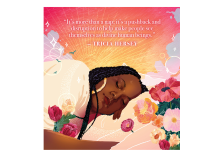
“MACHINES, WHETHER MECHANICAL or digital, aren’t interested in truth, beauty, or justice. Their goal is to make the world a more efficient place for more machines.” So argues journalist Andrew Nikiforuk, paraphrasing Jacques Ellul’s seminal The Technological Society. “Their proliferation combined with our growing dependence on their services inevitably led to an erosion of human freedom and unintended consequences in every sphere of life.”
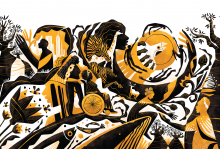
In a real sense all life is interrelated. All [people] are caught in an inescapable network of mutuality, tied in a single garment of destiny. Whatever affects one directly, affects all indirectly. I can never be what I ought to be until you are what you ought to be, and you can never be what you ought to be until I am what I ought to be. ... This is the interrelated structure of reality. —Martin Luther King Jr.
WHEN I STUDIED abroad in South Africa in 1996, I learned much about the power of interdependence and mutuality. There I encountered and experienced the southern-African philosophy of ubuntu. Through Nelson Mandela’s moral leadership and embodiment of ubuntu, the nation was led through transformational change. Like Dr. King, Mandela refused to hate his enemies, including those who kept him imprisoned for 27 years, as he envisioned a future South Africa that included Black and white together.
Archbishop Desmond Tutu summarized ubuntu in what became a marker of both a movement and a philosophy: “I am because we are.” Mpyana Fulgence Nyengele, author of Cultivating Ubuntu, offers this definition: “Ubuntu is the substance and core being of a person and speaks particularly about the fact that we cannot be fully formed as human beings in isolation.” Rather, as Stephen Lewis, Matthew Wesley Williams, and Dori Baker share in Another Way, Nyengele explains that “it is only through our communal participation and interaction with other people that we begin to develop trust, compassion, caring, humility, kindness, and forgiveness, which are all qualities of what it means to be human and humane toward others. Similar to the fruit of the spirit, ubuntu is possible because ntu or Spirit ‘orients persons toward life-giving choices, actions and behaviors.’ ... Therefore, ‘ubuntu promotes and enhances the abundance of human life in community and beyond.’”
I think of ubuntu as an expanded, vivid version of the Golden Rule: We are called to do unto others as we would have them do unto us. Or, as King so often put it, we are to be “our brothers’ and sisters’ keeper.”
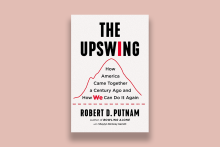
IN THIS TIME of pandemic and sheltering in place, we all feel the need for community. We self-isolate to guard the health of ourselves and our friends—shunning our neighbors is, paradoxically, loving them. This cultural conundrum suits our individualistic age, and the story of how we came to this rampant individualism is told in The Upswing: How America Came Together a Century Ago and How We Can Do It Again, by Robert D. Putnam and Shaylyn Romney Garrett.
Putnam made his name 20 years ago with Bowling Alone, diagnosing America’s shrinking sense of community since the ’60s. He propagated the concept of “social capital” to name the value of our connections, to quantify our losses. Now, in The Upswing, he takes the story back further and speaks in simpler terms of “I” and “we.”
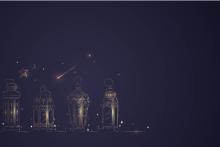
In years past, I’ve invited my non-Muslim friends and community members to visit my mosque for interfaith Iftars. These were opportunities to discuss similarities in fasting across Muslim, Christian, and Jewish traditions, as well as chances to share food and friendship. Now, these interfaith events are impossible. But there are still ways to come together in friendship and solidarity for Muslims during COVID-19 Ramadan.

Churches across the country are learning that loving one another and our neighbors — while physically distancing ourselves from them — is possible.

GOD'S FAITHFULNESS is measured in generational time. An emphasis on God’s faithfulness across generations is, by necessity, also an emphasis on community. God speaks and acts for the benefit of those present and those to come. Even when singular figures are mentioned—a prophet, a monarch—the message affects and is passed to and through the people.
The law and prophets represent God’s investment over time and bind together these readings. The law and prophets speak at moments in time but their messages are timeless. The gospel presents these truths embodied in the person of Jesus—and the epistles preach them passionately.
These lessons are read in the great expanse of liturgical time known as “ordinary” or as the season after Pentecost. This is a green season in the church (no matter what your grass looks like); that green symbolizes growth. This is a time for remembering the explosive growth of the early church and tending to our own growth as individuals and in community. Growth takes time. Our sacred stories make abundantly clear that the people of God—individual exemplars and the community, nation, and church—grew into fidelity over time.
The shaping of character and growth of faith is a process. These texts are signposts along the way.

IN HIS BOOK Community and Growth, Jean Vanier explains that for any community to thrive, there must be more members who can say “me for the community” than those who say “the community for me.”
That simple contrast—me for the community vs. the community for me—captures the heart of the dilemma facing modern Western culture and, by extension, the expressions of the church that are sustained in its midst. The Enlightenment and the models for political, social, and economic life that it spawned in modern Western culture freed humanity from oppressive, authoritarian rule governing thought, religion, and political structures. The role, rights, and agency of the individual became paramount. This revolutionized the philosophical framework for how society should be governed.
In contrast to individualism, what generally can be termed “collectivism” begins by asserting that realities of social groups are the primary reference point for understanding how societies should be organized and governed. In a nutshell, individuals don’t really have a meaningful identity apart from their belonging to a social group. Participation in a collective group, in this view, is both a more realistic understanding of how society functions and is the context that makes individual life possible.
For political philosophy, the question becomes where the starting point is: Does society find its moral foundation in the rights of its individual members, who then make agreements and social contracts for how best to preserve these rights? Or does society begin by recognizing we are social beings, and collectively we decide—through various political processes—how best to secure the rights of all who belong to a shared community? Normally this becomes a healthy political dialogue between the primacy of individual freedom and the responsibility of upholding the common good of society.
But ideas can be pushed to extremes, at times with frightful consequences of enormous social evil.